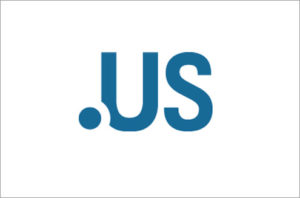
Date: 04/01/2002.us is the Internet country code top-level domain (ccTLD) for the United States. It was established in 1985. Registrants of .us domains must be United States citizens, residents, or organizations, or a foreign entity with a presence in the United States. Most registrants in the country have registered for .com, .net, .org and other gTLDs, instead of .us, which has primarily been used by state and local governments despite any entity having the option of registering a .us domain.
History
On February 15, 1985, .us was created as the Internet’s first ccTLD.[2] Its original administrator was Jon Postel of the Information Sciences Institute (ISI) at the University of Southern California (USC). He administered .us under a subcontract that the ISI and USC had from SRI International (which held the .us and the gTLD contract with the United States Department of Defense) and later Network Solutions (which held the .us and the gTLD contract with the National Science Foundation).
Postel and his colleague Ann Cooper codified the .us ccTLD’s policies in December 1992 as RFC 1386 and revised them the following June in RFC 1480. Registrants could only register third-level domains or higher in a geographic and organizational hierarchy. From June 1993 to June 1997, Postel delegated the vast majority of the geographic subdomains under .us to various public and private entities. .us registrants could register with the delegated manager for the specific zone they wished to register in, but not directly with the .us administrator. In July 1997, Postel instituted a “50/500 rule” that limited each delegated manager to 500 localities maximum, 50 in a given state.
On October 1, 1998, the NSF transferred oversight of the .us domain to the National Telecommunications and Information Administration (NTIA) of the United States Department of Commerce. Postel died that month, leaving his domain administration responsibilities with ISI. In December 2000, these responsibilities were transferred to Network Solutions, which had recently been acquired by Verisign.
On October 26, 2001, Neustar was awarded the contract to administer .us. On April 24, 2002, second-level domains under .us became available for registration. One of the first .us domain hacks, icio.us, was registered on May 3, 2002, for the creation of the subdomain del.icio.us. A moratorium was placed on additional delegations of locality-based namespaces, and Neustar became the default delegate for undelegated localities. Neustar’s contract was renewed by the National Telecommunications and Information Administration (NTIA) in 2007 and most recently in 2014.
Locality namespace
The .us ccTLD is historically organized under a complex locality namespace hierarchy. Until second-level registrations were introduced in 2002, .us permitted only fourth-level domain registrations of the form “<organization-name>.<locality>.<state>.us”, with some exceptions for government entities. Registrants of locality-based domains must meet the same criteria as in the rest of the .us ccTLD. Though the locality namespace is most commonly used for government entities, it is also open to registrations by private businesses and individuals. Since 2002, second-level domain registrations have eclipsed those in the locality namespace, and many local governments have transitioned to .org and other TLDs.
Many locality-based zones of .us are delegated to various public and private entities known as delegated managers. Domains in these zones are registered through the delegated manager, rather than through Neustar. As the delegated managers are expected to receive requests directly from registrants, few if any domain name registrars serve this space, possibly contributing to its lower visibility and utilization. RFC 1480 describes the rationale for the locality namespace’s deep hierarchy and local delegation, which has proven unappealing to companies that operate nationally or globally:
One concern is that things will continue to grow dramatically, and this will require more subdivision of the domain name management. Maybe the plan for the US Domain is overkill on growth planning, but there has never been overplanning for growth yet.
As of October 31, 2013, 12,979 domains were registered under the locality namespace, of which 3,653 were managed by about 1,300 delegated managers while 9,326 were managed by Neustar as the de facto manager. According to a 2013 survey of 539 delegated managers, 282 were state or local government agencies, while 98 were private individuals and 85 were commercial Internet service providers. Nearly 90% of the respondents offer domain registrations for free.
States and territories
A two-letter second-level domain is formally reserved for each U.S. state, federal territory, and the District of Columbia. Each domain corresponds to a USPS abbreviation. For example, .ny.us is reserved for websites affiliated with New York, while .va.us is for those affiliated with Virginia. Second-level domains are also reserved for five U.S. territories: .as.us for American Samoa, .gu.us for Guam, .mp.us for the Northern Mariana Islands, .pr.us for Puerto Rico, and .vi.us for the U.S. Virgin Islands. However, these domains go unused because each territory has its own ccTLD per ISO 3166-1 alpha-2: respectively, .as, .gu, .mp, .pr, and .vi.
A state’s main government portal is usually found at the third-level domain state.<state>.us, which is reserved for this purpose. However, some state administrations prefer .gov domains: for example, California’s government portal is located at both http://www.ca.gov/ and http://www.state.ca.us/, while Massachusetts’ is located at www.mass.gov instead of http://www.state.ma.us/. Fully spelled-out names of states are also reserved under .us, so the State of Ohio’s website can be found at http://ohio.gov/ and http://ohio.us/, with http://www.state.oh.us/ serving as a redirect. Other than for state governments, no third-level domain registrations are permitted under state or territory second-level domains.
Locality domains
A large number of third-level domains are reserved for localities within states. Each fourth-level domain registration under this namespace follows the format “<organization-name>.<locality>.<state>.us”, where <state> is a state’s two-letter postal abbreviation and <locality> is a hyphenated name that corresponds to a ZIP code or appears in a well-known atlas.